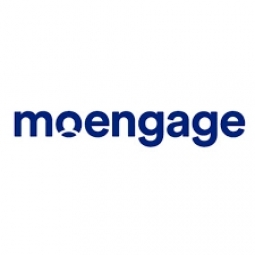技术
- 功能应用 - 产品生命周期管理系统 (PLM)
用例
- 基于使用的保险
关于客户
TaxiForSure 是一项出租车预订服务,客户可以通过移动应用程序、网站和呼叫中心预订乘车服务。该公司的目标是提供无缝的预订体验,让用户在 15 秒内预订乘车。 TaxiForSure 现在隶属于 Ola,Ola 是印度最大的网约车公司之一。该公司专注于完善用户生命周期,旨在减少用户流失并提高保留率、推荐和收入。他们使用有针对性的活动来与客户互动并更好地了解他们的行为。
挑战
TaxiForSure 现已成为 Ola 的一部分,旨在完善用户生命周期——尾部保留、推荐和收入。该公司希望更有效地与客户互动,以减少客户流失并提高保留率、推荐率和收入。他们正在寻找更好地了解客户行为并发送有针对性的营销活动以提高转化率的方法。面临的挑战是在移动应用程序、网站和呼叫中心之间创建无缝的预订体验,并使用户能够在 15 秒内预订乘车。该公司还希望重新吸引不活跃的用户,并针对流失的用户开展有针对性的活动。
解决方案
TaxiForSure 求助于 MoEngage 来开展多个活动以保持用户的参与度。他们针对只尝试过一次应用程序的用户,并针对流失的用户开展活动。他们还在 MoEngage 高级细分的帮助下针对最活跃的用户开展了推荐活动。为了增加收入,TaxiForSure 通过推荐活动吸引新客户,并开展有针对性的活动以从现有客户中获得更多收益。他们的目标是在使用的前三个月内增加每个用户的预订数量和每个活跃用户的收入。
运营影响
数量效益

Case Study missing?
Start adding your own!
Register with your work email and create a new case study profile for your business.
相关案例.

Case Study
Safety First with Folksam
The competitiveness of the car insurance market is driving UBI growth as a means for insurance companies to differentiate their customer propositions as well as improving operational efficiency. An insurance model - usage-based insurance ("UBI") - offers possibilities for insurers to do more efficient market segmentation and accurate risk assessment and pricing. Insurers require an IoT solution for the purpose of data collection and performance analysis

Case Study
Transforming insurance pricing while improving driver safety
The Internet of Things (IoT) is revolutionizing the car insurance industry on a scale not seen since the introduction of the car itself. For decades, premiums have been calculated using proxy-based risk assessment models and historical data. Today, a growing number of innovative companies such as Quebec-based Industrielle Alliance are moving to usage-based insurance (UBI) models, driven by the advancement of telematics technologies and smart tracking devices.

Case Study
Digital Transformation in Insurance: A Case Study of Menora Mivtachim
Menora Mivtachim, one of Israel's largest pension fund and insurance carriers, was facing a significant challenge due to demographic trends in Israel. The growing rate of retirement planning and services was putting unprecedented pressure on the already strained insurance sector. The pension claims process was bottlenecked with complexities, bureaucracy, and errors. Menora Mivtachim's existing pension process was heavily manual and spreadsheet-based, requiring a team of 10 full-time employees to manage. The process involved gathering applicant information, conducting personal surveys, compiling bank information, and finalizing agreements. To leverage the growing opportunity in the retirement sector and position themselves as innovative insurtech leaders, Menora Mivtachim needed to digitalize their process, streamline the claims experience, and reduce quote times through automated processes.

Case Study
Telit | Jooycar Offering A New Solution For The Usage-Based Insurance Market
Jooycar sought to provide an end-to-end, cloud-based insurance telematics platform focused on creating value insurers and enhancing policyholders’ experience. Its usage-based insurance (UBI) solution demanded various data inputs and outputs, including automotive data collection, user data collection and output to many possible data bases and applications. To create such a flexible smart car platform, Jooycar enlisted the help of Telit’s IoT technology and expertise.

Case Study
Gexa Energy and AutoGrid's Innovative Demand Response Programs in ERCOT
Gexa Energy, a leading retail electricity provider in Texas, was seeking to introduce new demand response programs for its commercial and industrial customers in the Electric Reliability Council of Texas (ERCOT) market. The challenge was to provide a platform that would allow these customers to lower their energy bills by adjusting their energy consumption during peak energy demand or high wholesale electricity prices. The solution needed to be intelligent, scalable, and offer both manual and automated options for adjusting energy consumption. The demand response programs needed to include Emergency Response Service (ERS), Real-Time Price Response (RTPR), and 4 Coincident Peak (4CP).
Case Study
AIG Enhances Customer Experience and Boosts Efficiency with OpenLegacy
AIG, one of the world's largest financial and insurance companies, faced significant challenges in delivering a seamless customer experience. Despite promoting a 'one call does it all' approach, their call center representatives had to manually enter data from their call center application into their core insurance system. Their IBM i applications, while reliable, were difficult to integrate with other systems in the technical stack. This made it nearly impossible to provide users with instant calculations of car insurance exchanges, a process that would have taken a year of development with the existing tools. This delay could potentially lead to the loss of clients and increased costs. AIG had invested heavily in streamlining their call center processes, but implementation proved challenging and the long-term approach was still far from achieving a fully online, fully digital workflow. Additionally, AIG needed a better way to pay insurance claims without redundant, monthly manual effort. The process took eight days of work every month and could not be done on the legacy system, leading to frustration and a sense of wasted time and effort for the insurance agents.







